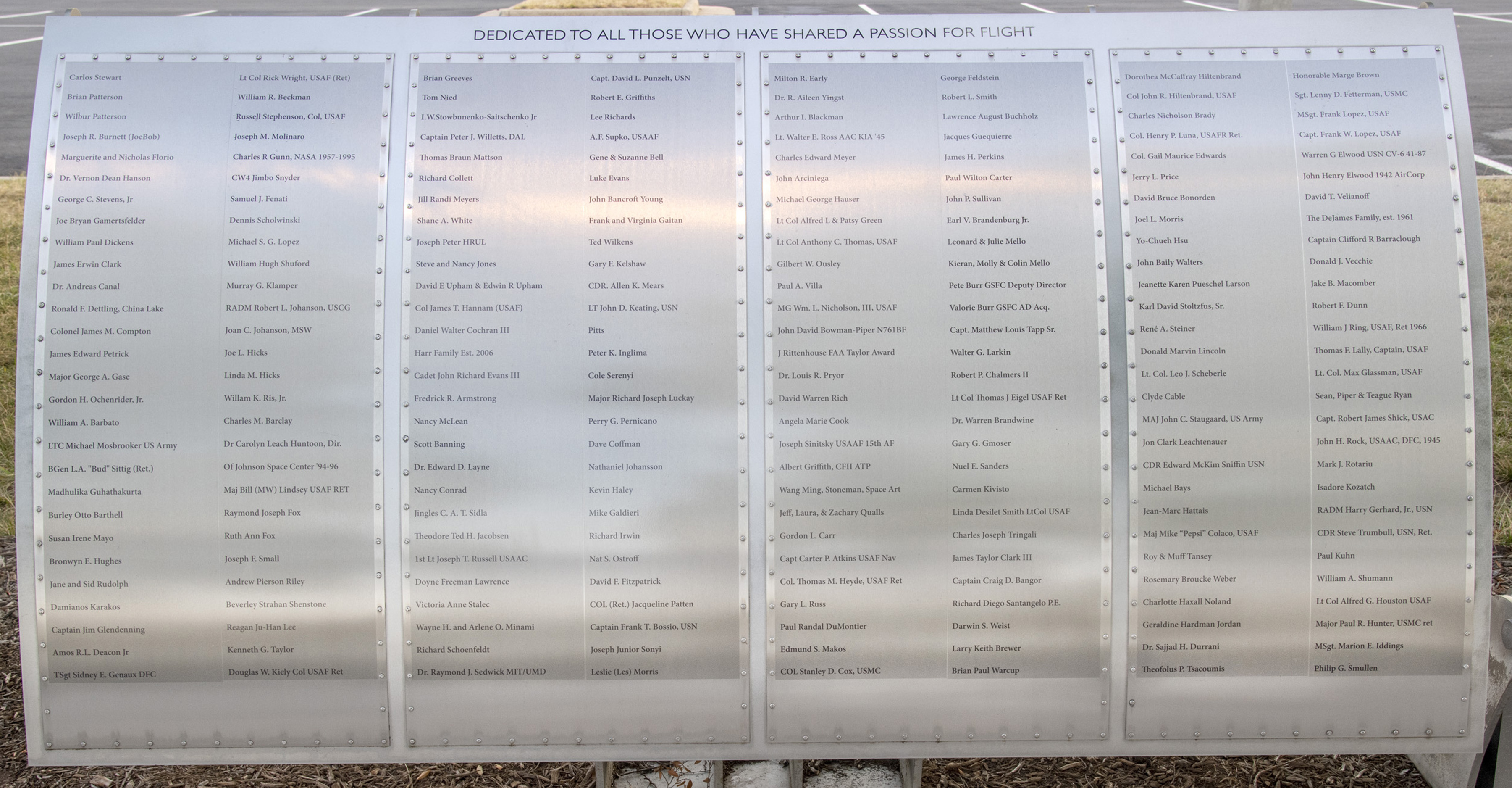Michael George Hauser
Foil: 51 Panel: 3 Column: 1 Line: 7
Wall of Honor Level: Air and Space Sponsor
Honored by:
Robert Hauser
Dr. Michael G. Hauser
Emeritus Astronomer, Space Telescope Science Institute
Adjunct Professor, Physics and Astronomy, Johns Hopkins Univ.
Dr. Hauser received his Bachelor's degree in Engineering Physics (with distinction) from Cornell University in 1962 and his Ph.D. in physics (thesis in experimental high energy physics) from the California Institute of Technology in 1967. Dr. Hauser began his post-doctoral career at Princeton University, where he served on the teaching faculty (1967-72) and spent three years as an experimental high energy physicist. In 1970 he shifted his research focus to astrophysics and cosmology, including development and utilization of instruments for ground, balloon and space-borne platforms. He then pursued astrophysical research as a Senior Research Fellow at Caltech (1972-74), developing detector technology for infrared astronomy. He became a NASA employee at the Goddard Space Flight Center in 1974, where he served until 1995 doing astrophysical and cosmological research and serving in positions of increasing management responsibility. While there, he initiated and led the Infrared Astrophysics Branch for fourteen years. He was then promoted to the Federal Senior Executive Service and served for seven years as Chief of the Laboratory for Astronomy and Solar Physics. He was a member of the Science Working Group for NASA's pioneering infrared astronomy mission, the Infrared Astronomical Satellite (IRAS), and was Principal Investigator of the Diffuse Infrared Background Experiment (DIRBE) on NASA's Cosmic Background Explorer (COBE) mission, which discovered the cosmic infrared background radiation. He was also a co-Investigator on the COBE Far Infrared Spectrophotometer (FIRAS) and Differential Microwave Radiometers (DMR). These instruments provided precise quantitative confirmation of the Big Bang origin of the universe and discovered the first evidence for the primordial irregularities which have led to the growth of the cosmic structures we see today. The COBE team shared the 2006 Gruber Prize in Cosmology, and two members shared the 2006 Nobel Prize in Physics.
Dr. Hauser retired from NASA in September 1995 to take the position of Deputy Director at the Space Telescope Science Institute (STScI), serving in that role until October 2009. During that period he was a leader in the transformation of STScI to a multi-observatory organization, serving both the Hubble and James Webb Space Telescope programs. Throughout his career, Dr. Hauser has served on many review and advisory panels for NASA programs as well as study committees of the National Research Council, including Astrophysics Decadal Survey panels. Notable advisory roles for NASA include service as Chair of NASA?€™s Two Micron All-Sky Survey (2MASS) External Review Board (1995-2003), member (2002-2004) and then Chair (2004-2006) of the SOFIA Science Council, and member (1998-2001) and then Chair (2001 ?€“ present) of the Spitzer Space Telescope Science Center Oversight Committee. Among his 136 publications are 73 refereed publications on high energy physics, astronomy, astrophysics and cosmology. Dr. Hauser retired from STScI in December 2010, and remains affiliated as an Emeritus Astronomer.
Dr. Hauser was appointed as an Adjunct Professor in the Johns Hopkins University Department of Physics and Astronomy in 1997, and has continued in that capacity to the present. During that time, he has occasionally served on thesis exam committees, the graduate admissions committee, the joint JHU-STScI external award nomination Committee and was a one-time guest lecturer in the course taught by Professor Charles Bennett. Though the level of such activity has declined since his retirement from STScI in 2010, he continues to attend selected Department coffee discussions, seminars and Colloquia.
Dr. Hauser has received numerous professional awards for his scientific, programmatic and management contributions. He is a Fellow of the American Physical Society and the American Association for the Advancement of Science. In 2014, he was awarded the George Van Biesbroeck Prize of the American Astronomical Society in recognition of his extensive service to astronomy during his career.
Wall of Honor profiles are provided by the honoree or the donor who added their name to the Wall of Honor. The Museum cannot validate all facts contained in the profiles.
Foil: 51
All foil images coming soon.View other foils on our Wall of Honor Flickr Gallery
